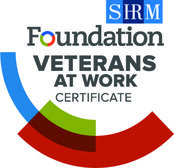As we ebb and flow through the proposal season, there are numerous types of RFPs that will drop which you might consider bidding on. Some might even have the Service Contract Act (SCA) clause 52.222-41 buried in the document. If you decide an RFP with the SCA clause is worth the bid, there are some things to take into consideration throughout the process. Here are a few items to consider:
• SCA clause is in the RFP, but not the Wage Determination (WD).
It is always a good idea to ask during the Q&A process if SCA does apply. If it does, then the government should provide the WDs. If the government does not, it is up to you to find the applicable WD on the Department of Labor (DOL) website. This is especially important when developing pricing as you will want to be sure that you have the most up to date data in order to develop your fringe pools and understand the hourly pay rates.
• The prior contract should have had the SCA clause incorporated into the contract.
If it has become apparent that the SCA provision did apply to the prior contract, the DOL may require retroactive application of the SCA. If you are the incumbent, you must make the employees as whole as possible when complying with the SCA.
You will need to ensure that the employees were:
• afforded the correct Health & Welfare (H&W) dollars,
• mapped to the appropriate labor category,
• considered with employee seniority on the contract when afforded vacation benefits, and,
• if the sick leave Executive Order is applicable, the employees will need to have sick time calculated based on hours worked.
If you are not the incumbent, you will still want to consider all of these options to develop your rates as they will be applicable going forward on the new contract.
•Benefits must comply with the Affordable Care Act (ACA).
In the past, organizations have attempted to reduce their pricing by trying to gut the benefits offered. Benefits must still comply with ACA’s minimum essential coverage and cost requirements. Just because the H&W is employer money to be used to purchase insurance on behalf of the employee, it still must meet the maximum cost threshold set by the government each year. Generally, benefit costs to the employee should not be more than approximately 9.5% of the lowest waged household income. Unfortunately, employers are not privy to an employee’s household income so it is a recommended best practice to take the lowest wage earner in the company and determine the maximum amount the medical benefit should cost that employee when determining cost allocations.
• SCA applies to all non-exempt employees on the contract.
Do not overlook part-time employees. Part-time employees are entitled to all SCA benefits, with the exception of health insurance benefits. You will want to be sure to incorporate costs for vacation and sick leave in your rates.
• Subcontractors’ compliance is a common issue/pitfall.
A good practice tip is to draft a form that calls out the requirements of the SCA with emphasis on its exemptions and provide this to your subcontractors. Train your contracts shop to send out the form to each subcontractor supporting a prime contract that contains the SCA clause in the prime contract. It is best to have documentation that shows your subcontractors’ assertion that it is exempt. And yes, the FAR clause does flow down to your subcontractors, they need to be aware and compliant, the Prime is on the hook for subcontractor compliance with the prime contract requirements.
• When bidding on IDIQs, make sure to check the master IDIQ contract vehicle.
It is common that the SCA clause is at the master IDIQ level but may not be incorporated into the task order. It is up to you, the contractor, to be sure that the SCA clause is adhered to even if it is not included in the task order.
• There is a Collective Bargaining Agreement (CBA) in place.
Just because there is a CBA in place, does not mean that the SCA provision does not apply. Yes, the CBA takes precedence over the SCA as it pertains to wages, H&W rates, and benefits; however, as an employer, you would still be required to adhere to the provisions of the SCA. When bidding, ask for a copy of the CBA so that your rates incorporate their requirements for wages, H&W, and benefits. Too often, employers will bid without understanding the CBA and find that they will need to adjust pay and benefits. Despite this required adjustment, the employer may not be able to go back to the government and request an equitable adjustment on your rates. You may have leverage in renegotiating the CBA if the SCA offers conflicting guidance. Always work with your legal team to ensure all the risks on both items.
• If you do not comply with SCA, the repercussions are harsh.
It is imperative that you know what you are getting yourself into when bidding and working on an SCA contract. The government will not accept that you did not know. It is up to you to make sure that you comply. If it is found that you did not comply, the government sanctions and fines can be harsh, and you could open yourself up for a DOL Wage & Hour audit. Government sanctions and an audit could include fines, penalties, back pay, punitive damages paid to the government and to the affected employee, debarment, and contract termination. It is in your best interest to be sure to comply with all applicable FAR clauses under the SCA.
Luckily for BOOST clients, we have the knowledge required to help keep you compliant. If you’re wondering if a bid is worth the SCA headache, let’s talk and set some strategic pricing plans in motion. Email [email protected] to learn more.





